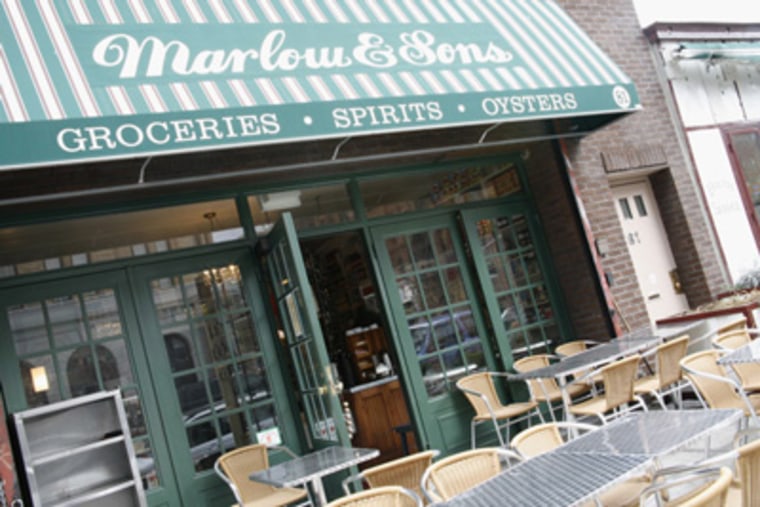Cosmopolitan cities like San Francisco, New York, Los Angeles, Chicago and Miami have long served as the nation's culinary capitals.
Get ready to add Salt Lake City to that list.
That's right. In Salt Lake City, a group of local farmers, cheese makers, bakers and chefs are remaking the city's culinary image. Rockhill Creamery, Beehive Cheese and Drake Family Farms utilize area grazing pastures to produce a variety of cheeses, including goat's milk, Gouda, feta and Gruyère. Crumb Brothers Artisan Breads hand-crafts olive, sourdough and ciabatta loaves, as well as other breads and pastries. And establishments like Bambara, a Kimpton Hotel restaurant that uses ingredients from local growers and ranchers, prove that Salt Lake can compete with the standard-bearers.
It's one of a handful of smaller cities across the county that are emerging as culinary destinations in their own right. Similar things are happening in cities like Tucson, Ariz., Chapel Hill, N.C., and Baton Rouge, La.
Kate Krader, restaurant editor at Food & Wine, attributes the evolution in food culture to several converging factors. These have simultaneously educated consumers about food production and glamorized not only local, organic and artisanal food items, but also the chefs and farmers who deliver them to the table.
"The days when the Olive Garden was ranked the best restaurant in the country," Krader says, "are on the decline."
Trend lines
One anecdotal measure, says Krader, has been the magazine's annual "Best New Chefs" list, which awards the honor to 10 chefs across the country. In recent years, winners have hailed from places like St. Louis, Waterbury, Vt., and Western Springs, Ill. Food & Wine editors are no longer surprised to learn that some of the country's most promising chefs are plying their trade in lesser-known destinations, a trend that surfaced about 10 years ago.
The past decade, says Krader, has been a pivotal one for other reasons. Food — and the way it reaches your plate — has become a fashionable topic, popularized in part by the rise of the Food Network, the expansion of the grocery chain Whole Foods and the growth of farmers' markets.
The Food Network now reaches 96 million households, and according to the channel, that’s 63 more million households than it reached in 1998. Those viewers are constantly exposed to new personalities and styles of cuisine, which they're often inspired to try at home or on Main Street.
Whole Foods, which sells organic products and champions an ethic of buying locally when possible, operates more than 270 stores nationwide, including locations in Birmingham, Ala., Carmel, Ind., and Lexington, Ky. The chain was born in 1980 in Austin, Texas, and just 10 years ago, had only 70 stores.
At the same time, farmers' markets have increased their presence dramatically. Between 2002 and 2006, there was a 40% increase in the number of markets nationwide, according to the market research group Packaged Facts. When last counted in 2006, there were 4,385 markets in the country, each of which exposes consumers to regional growers and purveyors.
Collectively, these trends have played a significant role in transforming expectations in cities that could have once been considered culinary backwaters.
Anya Fernald, executive director of Slow Food Nation, a subsidiary of the non-profit organization Slow Food USA, says that, as a result, consumers have begun to reconsider their attitudes toward food.
"Globally, people are looking for authenticity and goods that have a connection to people, a place and culture," she says. Great culinary experiences, for example, now include looking in one's own (figurative) backyard for the ingredients for that night's dinner. Fernald adds, "It's not about that truffle foam that totally blew my mind."
Emerging foodie finds
To that end, Fernald sees places like Chapel Hill, N.C., San Diego, Calif., and Brooklyn, N.Y., as emerging culinary destinations. In each of these cities, she's noticed a commitment to reinventing cuisine — or in San Diego's case, beer — through collaborations between farmers and chefs and healthy competition to improve quality.
Such an approach has been fundamental in Durham-Chapel Hill, which was recently branded "America's Foodiest Small Town" by Bon Appétit. There are 120 small farms within a 50-mile radius of Chapel Hill, according to the magazine, and close relationships between chefs and farmers are helping the town gain credibility as a culinary destination.
In recent years, Tucson has undergone a gradual revolution. Once dominated by Mexican restaurants and steakhouses, this Southwestern city now offers a more diverse dining experience, including Chinese, Middle Eastern and Ethiopian cuisine.
Since 1999, an organization called Tucson Originals has worked to preserve local culinary heritage by promoting independently owned restaurants. The city has also landed high-profile culinary stars like Laura Williamson, a master sommelier, and Bruce Yim, executive chef and James Beard House honoree, both of whom are at VinTabla.
In Brooklyn, a collection of newer ventures is gaining recognition for inventive, seasonal and locally sourced menus. These include Marlow & Sons, Diner and Bonita — a small empire of sister restaurants — as well as General Greene and James.
Though General Greene has earned mixed reviews for dishes like watermelon salad with goat cheese and spice-rubbed lamb, its owner and chef have high-profile Manhattan pedigrees. James has had more critical success. The New York Times' restaurant critic, Frank Bruni, awarded the Brooklyn Heights restaurant one star and raved about its roasted loin of lamb coated with powdered pine nuts and rosemary. Chef James Calvert has worked in the kitchens of Manhattan eateries Bouley and Union Pacific.

The migration of Manhattan-trained chefs to Brooklyn is an economic decision that also reflects a larger trend in the culinary world. Chefs and restaurateurs capitalize on lower rents in Brooklyn, and the savings can be dramatic.
Paul Fetscher, president of Great American Brokerage, a Long Beach, N.Y.-based firm that specializes in restaurants and retail, says rents in popular Greenwich Village can run up to $150 per square foot. In trendy Williamsburg, Brooklyn, chefs can easily find space for $40 to $45 per square foot.
Retail rent in cities like New York, Chicago and Los Angeles may also convince aspiring chefs to stay home — and that might be in Memphis, Tenn., or Fredericksburg, Texas. While the National Restaurant Association doesn't track rent across the country, its research does show that between 6 percent and 6.9 percent of sales, on average, go toward covering occupancy costs. In New York, that number can easily reach 10 percent.
Kate Krader of Food & Wine sees the economic practicalities, but also points to the challenges of trying to break in to one of the major culinary destinations.
"There's an economic reality to the fact that chefs are setting up restaurants in very small towns," she says. "But there's also the question of, 'How am I going to get traction in New York? There's too many superstars here. Instead of being a little fish in a big pond, you want to be a big fish in a small pond."
In other words, for gourmands currently living in foodie deserts, help is on the way.
